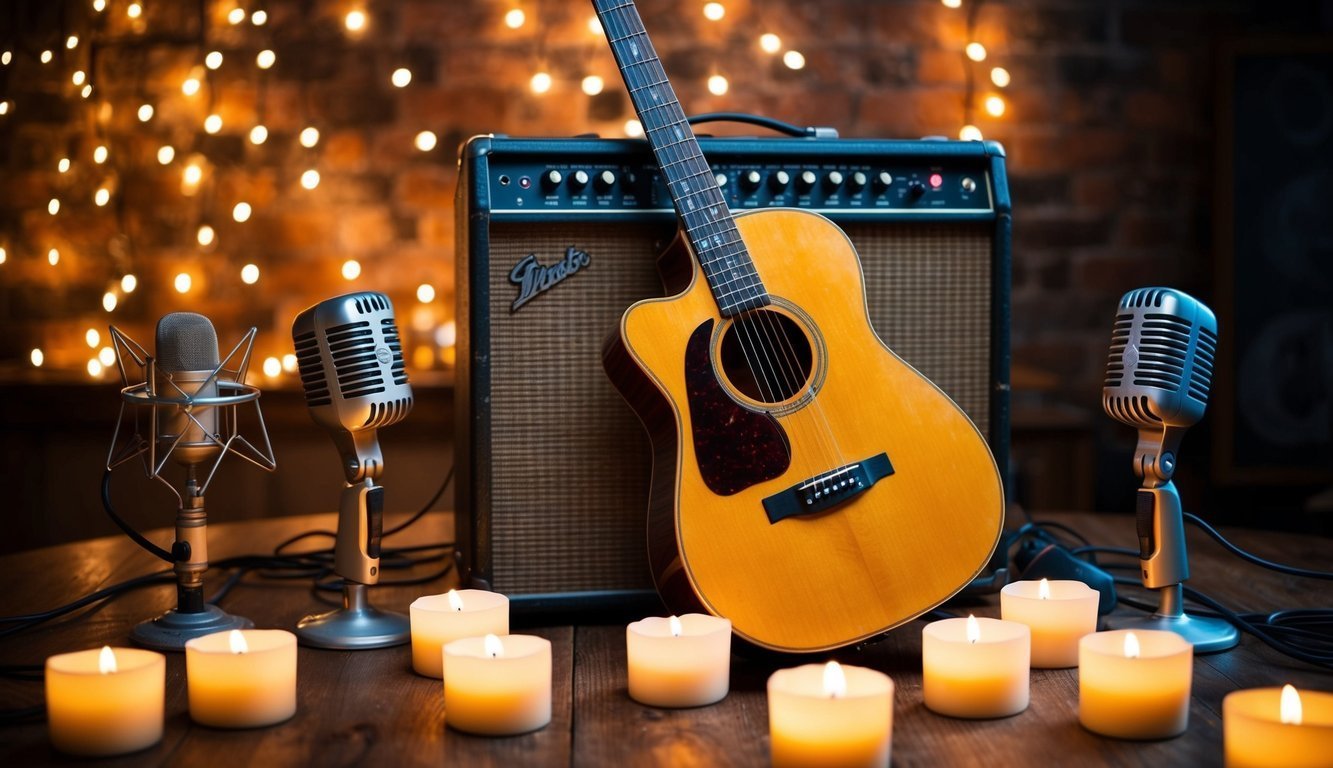Among the many iconic musical moments, Nirvana’s MTV Unplugged in New York holds a special place in the hearts of fans and critics alike.
How did this influential band of the ’90s transform their signature electrifying sound into the more subdued acoustic setting of the Unplugged series, offering audiences a memorable experience?
Context of the Performance
MTV launched its Unplugged series in 1989, quickly evolving into a cultural milestone that birthed some of the decade’s most celebrated live albums.
Artists such as Alice In Chains, Eric Clapton, and Mariah Carey all delivered standout performances, but Nirvana’s contribution stood out, especially given its poignant timing.
Their performance aired in December of 1993, just four months before the heartbreaking loss of frontman Kurt Cobain, while the accompanying album, released in November 1994, ascended to number one on the Billboard Charts, achieved platinum status eight times, and earned the band their only Grammy Award.
Iconic Gear and Collaborations
What made Nirvana’s MTV Unplugged performance particularly memorable was how it showcased a different side of the band.
Cobain took this opportunity to reflect on his influences, weaving in covers from a variety of artists, including David Bowie, The Vaselines, and Leadbelly.
The band’s performance was especially notable for its three collaborative songs with the Meat Puppets, who joined them on stage, creating a rich tapestry of sound.
The collection of instruments used during this monumental performance mixed classic favorites with unique, new additions.
At the forefront of the show was Cobain’s newly acquired 1959 Martin D-18E, an exceptionally rare guitar with only about 300 units ever made.
He bought this instrument just before filming in the fall of 1993, modifying it for his left-handed play style by recutting the nut and bridge.
To give it an extra layer of sound, he also installed a Bartolini 3AV pickup, inspired by the setup used by R.E.M. guitarist Peter Buck.
This very Martin D-18E later drew international attention when it sold at auction for over six million dollars in 2020, marking it as the most expensive guitar ever sold.
While collectors often overshadow the D-18E’s reputation in favor of other vintage Martins, its acclaim skyrocketed after Cobain’s performance.
Originally designed for electric guitarists, the instrument featured magnetic pickups on a classic dreadnought body, resulting in limited production runs.
It wasn’t until Cobain got his hands on it that its value and significance were truly recognized.
The Performance Experience
Before his Unplugged performance, Cobain had primarily played an Epiphone Texan, notable for its excellent sound.
The switch to the Martin was not just about sound; it was a deliberate visual choice for such a landmark event.
A close friend highlighted that while the Texan possessed a superior tonal quality, seeing Cobain with a visually stunning Martin, enhanced by electronic components, made for a striking image.
Interestingly, there are no prior recordings of Cobain using the D-18E in concert before this performance, which only adds to its legend.
Some might find it amusing to think of Cobain chuckling at the instrument’s newfound fame.
For the Unplugged show, while many artists typically connect acoustic guitars directly to the soundboard, Cobain chose to amplify his Martin through a Fender Twin Reverb amp for personal monitoring.
Producers cleverly kept the amp out of camera view to retain the show’s intimate aesthetic.
They even swapped out some of the amp’s preamp tubes to ensure a clean and polished sound for the performance.
Besides the iconic Martin, Cobain also employed a DS-2 distortion pedal and an Electro-Harmonix Small Clone chorus.
These pedals enriched his performances of tracks like “The Man Who Sold The World,” and also featured prominently in “About A Girl” and “Come As You Are.”
Of course, the spotlight wasn’t solely on Cobain during this unforgettable performance.
Nirvana’s touring guitarist Pat Smear and Meat Puppets’ Curt Kirkwood joined in, with Krist Novoselic switching to guitar for one song.
Smear prominently played a visually striking Harmony Buck Owens American acoustic guitar, chosen not only for its sound quality but also for its aesthetic appeal, featuring a Bill Lawrence pickup and mic’d up for optimal performance.
The collaboration brought a unique energy to the stage, showcasing the synergy between the artists and creating a memorable experience for the audience.
As they traded riffs and harmonized on the chorus, it felt reminiscent of ace frehley’s iconic audition moment, where confidence and creativity merged seamlessly.
Every chord resonated, leaving an indelible mark on the minds of fans who would remember this performance as a defining moment in rock history.
While MTV has recorded over 101 Unplugged sessions, only about 30 have made it onto albums.
Nirvana’s performance, along with Eric Clapton’s, ranks among the most cherished.
Their album has surpassed five million in sales, and the sobriquet of a Grammy winner only bolsters its legacy.
This record showcased Nirvana’s exceptional ability to convey artistry through a stripped-back acoustic format, revealing more than just their grunge image.
Ultimately, the gear used in this momentous performance wasn’t solely about capturing a specific sound; it was about weaving a visual narrative as well.
Nirvana’s true brilliance lay in their ability to captivate audiences, regardless of whether they were plugged in or unplugged.
This essence is deeply embedded in their legacy, ensuring that their contributions to music continue to resonate with fans to this day.

